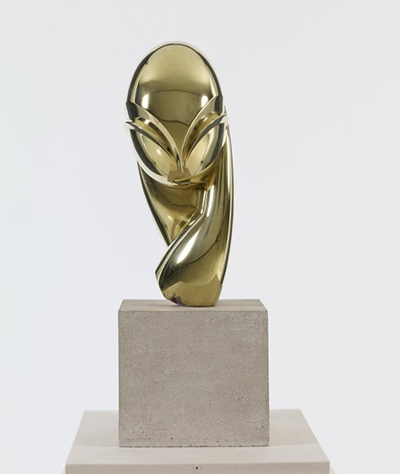The smooth lines of the bronze sculpture - Mademoiselle Pogany II - are typical of the graceful and restrained style of Constantin Brancusi. Brancusi developed his style after decades of study in art schools and workshops in his home country of Romania, and then later in Paris.
However, Brancusi's love of sculpture started at a much earlier age as a child in Romania where he demonstrated skills and a keen interest in woodcarving, creating a variety of tools and wood sculptures. Brancusi's distinctive style was first honed in the early 1900's after he left the workshop of Rodin and started to develop his modernist technique.
Brancusi strove to depict the idea or essence of things and not their literal form, and this is fully demonstrated in Mademoiselle Pogeny II. The sculpture was created in 1920 and is based on the landscape painter Margit Pogany who had requested the portrait after visiting Brancusi's studio. Pogany sat for Constantin Brancusi on several occasions, and the artwork was completed at a later date after the artist had first cast it in marble before making a later bronze sculpture. By reducing his subject's face to simple lines the sculptor somehow manages to emphasise the features of the Hungarian painter. This can be seen in the almond-shaped eyes, the lines of the nose and the sophisticated chignon, as well as the delicate suggestion of hands resting against her chin.
As well as the modernist style of his time, Brancusi also made reference to the older, mannerist style of art in his creations, whereby the subject is often shown as elongated or distorted but yet retains an elegance. Although Brancusi admired his mentor Rodin it was not until he left his tutelage that he felt he could fully express himself out of the shadow of the renowned sculptor. His work after this time begins to take on the distinctive look of works such as Mademoiselle Pogeny II and other art that simplified forms to basic or geometrical objects. Brancusi's work was also strongly influenced by his childhood near the Carpathian mountains and the deeply ingrained folklore of the region.
In capturing the beauty of the female artist as shown in Mademoiselle Pogany II, Brancusi has created a very aesthetical experience for the viewer in the sweep of the head and the soft curves of the sculpture. In keeping with his quest to capture the essence of a subject he has perfectly captured the features and grace of the sitter, and the whole effect is enhanced by the warm glow of the bronze medium.




